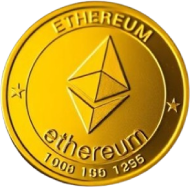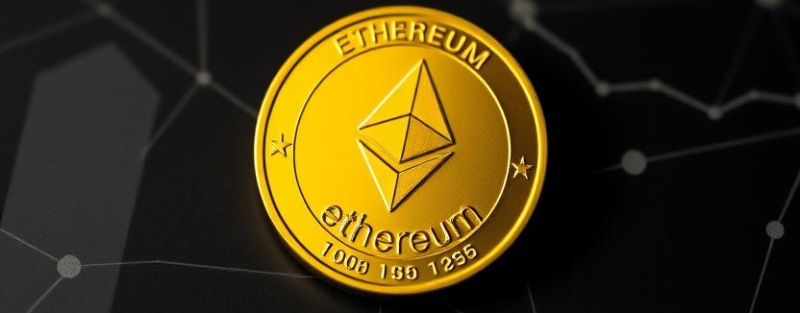The Basics of Ethereum

At the core of Ethereum lies a decentralized platform built on blockchain technology. A blockchain is a shared history or ledger of transactions that is distributed across a network of computers such that no single entity is ever able to control the data. In a traditional centralized environment, a single authority controls the operations; think of one bank, for instance. But if we consider a blockchain of Ethereum, it is entirely decentralized. Therefore, there is no need for a single institution to process and verify transactions because the nodes (computers) within the network themselves maintain the system.
The Ethereum blockchain enables developers to create and deploy smart contracts and decentralized applications (dApps). A smart contract essentially is a self-executing contract in which the terms of the agreement between buyer and seller are written directly into lines of code. These contracts execute themselves and enforce the terms of the contract when certain conditions have been met, which removes the need for intermediaries, such as banks or lawyers.
The Ethereum Virtual Machine (EVM)
Ethereum can be viewed as one gigantic computer spread across all nodes of the network. The EVM guarantees that every node is performing exactly the same instructions in the same manner, thereby positioning Ethereum as a reliable DApp platform.
In simpler terms: an Ethereum blockchain does not just allow cryptocurrency transactions, it acts as a full-fledged platform for any kind of program to exist, provided it uses the Ethereum network.

How Does Ethereum Work?
Ethereum has miners (or validators in PoS of Ethereum 2.0) who validate transactions and add those transactions to the blockchain by solving intricate mathematical problems requiring computational power. Once they validate a block of transactions, it gets appended to the blockchain, and the miners receive rewards in the form of Ether (ETH), the native cryptocurrency of Ethereum system.
Enforcing the security of the Ethereum network is a consensus mechanism known as Proof of Work. A miner is in competition with another miner to solve the puzzle, and the first miner to solve the puzzle gets to add a block to the blockchain. It is an energy-hungry process, but through Ethereum 2.0, Ethereum is moving to an energy-efficient alternative, i.e., the Proof of Stake (PoS). In PoS, instead of miners competing against each other with computational power, a validator is randomly selected depending on how much Ethereum he or she is willing to stake as collateral.
Gas Fees - The Cost of Using Ethereum
Ethereum has the singular feature of gas fees. Users must pay a gas fee every time they send a transaction or interact with a smart contract on the Ethereum network. The fee is paid in ETH and goes to the miners/validators for performing a given level of computation. Gas fees can fluctuate depending on network congestion, and they can get pretty expensive during a time of extraordinary demand.
One thing gas fees are supposed to do is keep the Ethereum network secure and fast, but they are equally criticized for always being so volatile. Hence, with Ethereum moving to Proof of Stake and Layer 2 scaling solutions coming into play, these fees ought to lessen over time.
Ethereum vs. ETH vs. Ether - What Is the Difference?
When venturing into the Ethereum ecosystem, you will face several terms initially hard to understand. Let's make a difference between Ethereum, ETH, and Ether.
What is Ethereum?
Ethereum refers to the network and platform itself, including the underlying blockchain, the dApps running on it, and the smart contracts that govern them. They represent the decentralized ecosystem in which applications and services operate.
What is Ether?
The most famous type of cryptocurrency to power the Ethereum network is called Ether or ETH. While many use the term "Ethereum" to refer to the currency, this is a misnomer because Ether is the digital asset actually used to pay for transaction fees and other services within the ecosystem.
In a very simple manner, Ether can be thought of as being similar to the fuel in Ethereum's blockchain; just in the same manner you need fuel to power a car, you need Ether to perform operations on the Ethereum network.
What is the Difference Between Ethereum and Ether?
In simple terms, Ethereum is the platform, and Ether is the currency running on top of said platform. Ethereum is the infrastructure, and Ether is the medium of transaction. Should you pay for any interaction with an Ethereum-based application, the most likely currency to be used is Ether. In any transfer of asset, using a DeFi protocol, or in purchasing an NFT, Ether (ETH) is the currency used.
The confusion arises because people tend to interchangeably assign this name to both the platform and the cryptocurrency, but distinguishing this should help you have a clearer grasp of Ethereum.
The Growing Importance of Ethereum
Ethereum has been the catalyst for a new wave of digital innovation. In contrast to Bitcoin, which mainly seeks to maintain value while exchanging solely, Ethereum's gaze is cast on decentralized applications (dApps) and developers building for a platform.
Some of the most innovative concepts in the larger paradigm of blockchain technology have Ethereum as the common denominator, with some examples being:
- Decentralized Finance (DeFi): Ethereum has basically become the backbone of the movement that fashions DeFi. It allows people to lend, borrow, trade, and earn interest upon their crypto assets without walling them through traditional financial institutions.
- Non-Fungible Tokens (NFTs): Some would say the bulk of NFTs is built atop Ethereum's blockchain and enable the ownership and exchange of rare digital assets (artwork, music, collectibles) in a secured manner.
- Decentralized Autonomous Organizations (DAOs): Ethereum further allows for the birth of DAOs, which are essentially organizations working through code rather than through a traditional framework of management so as to promote transparent and decentralized decision-making.
- Smart Cities and IoT: With more systems becoming interconnected through IoT, Ethereum smart contracts could serve as automation tools for validating information and facilitating trustless indie communications among the devices.
Challenges and the Future of Ethereum
Another hurdle that this ether has is that of scalability. The more user interactions there are on a network, the harder Ethereum's current infrastructure is to keep up with demand, networks becoming congested, and therefore, gas fees rising. However, Ethereum 2.0 is meant to address just these issues through the introduction of Proof of Stake and sharding (splitting the network into smaller manageable pieces). These are thus expected within the future to assist with making Ethereum faster, cheaper, and more scalable.
Conclusion
Ethereum is far from just another cryptocurrency; it is a set of technologies allowing developers to creatively build upon and deploy their applications in an inherently secure and transparent environment. By facilitating smart contracts and dApps, Ethereum has thus become a paradigm secretary, revolutionizing our thoughts on internet, finance, and digital assets.